| 1 | Jaeger’s ground snake |
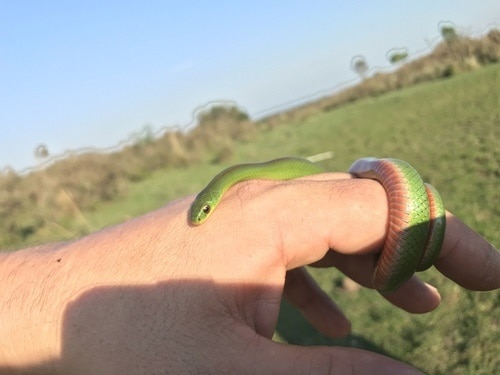
A small snake with a maximum length of 55cm. Jaeger’s ground snake belongs to the enormous Erythrolamprus genus (55 members), and inhabits the vast majority of Uruguay. It also inhabits northeast Argentina and far southern Brazil, but Uruguay is its heartland. Jaeger’s ground snake is a clean, pastel green, with a juicy red stripe running down its spine. Its belly is the same shade of red, and the body and belly are separated by paler flanks.
Jaeger’s ground snake is fast-moving and agile, but has no malice towards humans. They’re one of Uruguay’s harmless species, docile and inoffensive. Erythrolamprus jaegeri mainly inhabits grassland, usually sticking close to water sources, where they blend in perfectly. They can hunt underwater, and have aquatic adaptions such as a vestibule that prevents water from leaking into the nostrils, and nostrils angled higher on the body, to allow a submerged head just below the surface. Their diet consists of fish, frogs and arthropods, according to a 2016 study, with no mammals or reptiles detected.
This snake’s closest relative in the world is the Almadan ground snake (Erythrolamprus almadensis), also found in Uruguay.
| 2 | Pampas lancehead |
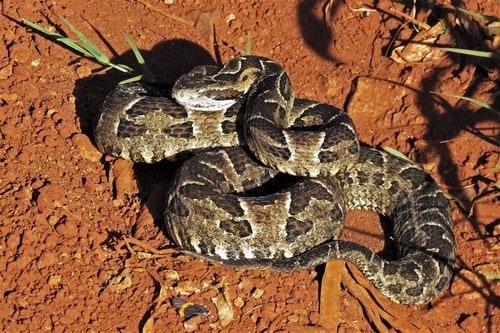
This species is as dangerous as Jaeger’s ground snake is harmless. This venomous species can exceed 130cm and is found across the entire eastern half of Uruguay, as well as far southern Brazil. Pampas lanceheads cope well with human modified areas and regularly appear near country houses and in agricultural fields. They’re also flexible about their diets. A 2005 study found 56.2% mammals, 21.2% frogs and toads, 7.5% lizards, and 7.5% fellow snakes.
This flexibility has allowed them to spread far and wide. In far southern Brazil, just over the Uruguayan border, scientists studied 33 snake species in the Serra do Sudeste region. They found that Pampas lanceheads were the most abundant by headcount, alongside the Patagonian racer.
In defence, Pampas lanceheads can vibrate their tail against leaves to create a buzz like a rattlesnake, flatten their upper body to appear larger, or of course, deliver a savage strike. Its venom is fairly normal for the Bothrops lancehead family, causing haemorrhaging and necrosis rather than neurotoxicity.
Uruguay also plays home to the venomous crossed pitviper (Bothrops alternatus). The two have separated into different habitats: crossed pitvipers are more common in wide sweeping grassland, and shun forests. Pampas lanceheads prefer forests or forests edges, particularly shaded areas with a covering of leaf litter. Because of their patterns, Pampas lanceheads are attracted to areas with rapidly alternating shade and sunlight. Pampas lanceheads can eat large prey; one was recorded eating a meal 62.7% of its own body weight.
| 3 | South American hognose snake |
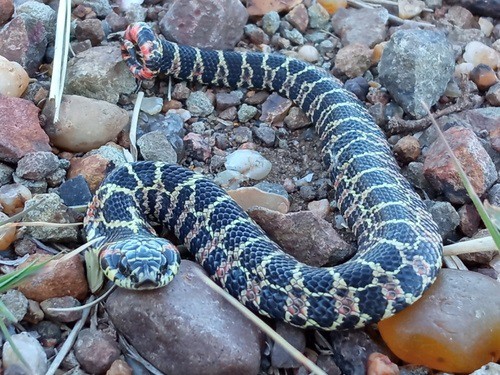
A snake of open grasslands and savannahs with loose, sandy soils. South American hognose snakes (Xenodon dorbignyi) measure 40-50cm and are mildly venomous, with an unresearched toxin profile.
This belongs to the same Xenodon family as Argentina’s tricolor hognose snake, but without the red coral snake-mimicking patterns. Instead, this snake mimics the Pampas lancehead and crossed pitviper for protection, with grey-beige tones. The exception is its bright red tail underside. This stands out vividly, and is designed for defence, as wiggling this bright redness distracts attention from its head. Xenodon dorbignyi has many defensive strategies overall. It can flee into bushes, hide its head below its coils, and shift bones in its skull to triangulate its head, to resemble a pitviper even more closely.
South American hognose snakes inhabit most of Uruguay, as well as far southern Brazil and northeast Argentina. This is a day-faring snake, which is most active from October to March, and preys mainly on frogs and toads, occasionally lizards. Its pupils are round, unlike the venomous pitvipers it copies. You can also find Xenodon dorbignyi in coastal sand dunes along the Atlantic.
| 4 | Pantagonian racer |
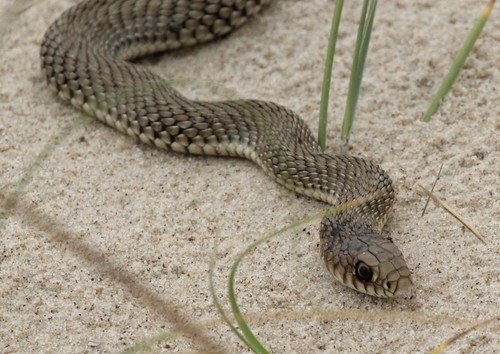
An extremely widespread species across southern South America. Patagonian lanceheads also roam a huge chunk of Brazil, Paraguay, and Argentina. They’re one of the most southerly snakes in the world, and Uruguay lies right at the heart of their empire. Patagonian lanceheads (Philodryas patagoniensis) are active explorers, with a permanent restless energy, which are regularly spotted crossing dusty rural roads. This is a long, thin snake which can reach 150cm.
Patagonian green racers are decent tree climbers, but mainly stick to the ground. They appear in forests and forest edges, but strongly prefer open habitats. Their diet is also varied. Patagonian green racers are confirmed to eat fellow snakes such as burrowing night snakes, the yellow-bellied liophis and their cousin, Lichtenstein’s green racer. Amphibians and toads contributed 38.9% of their meals in a 2005 study, mammals 15.6%, and lizards 23.3%.
You’re very likely to spot this snake bounding up a dry hillside, eagerly searching for its next meal, and if so, there’s little to worry about. Patagonian green racers have never caused a human fatality. They’re a minor danger in Uruguay, as bites can trigger swelling of the affected limb, painful redness, and occasionally dizziness. That said, they bite relatively commonly, as this study analysed 297 cases in Brazilian hospitals from 1959 to 2008. Watch and don’t touch.
| 5 | Amazon false coral snake |
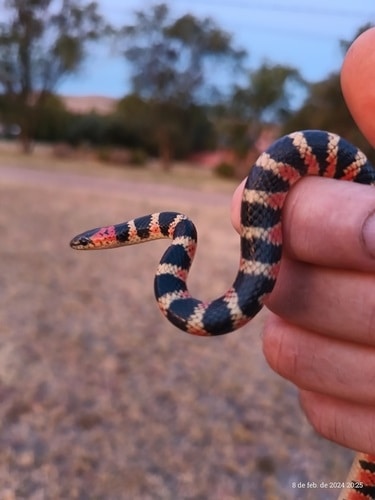
This harmless snake inhabits a large chunk of the neighbourhood, including Argentina and southern Brazil, but southern Uruguay has perhaps the highest density of sightings of anywhere. Amazon false coral snakes (Oxyrhopus rhombifer) reach a maximum of 60cm and inhabit a mixture of forests and open savannah; there’s little chance of finding them in the capital Montevideo. This snake occasionally has blood red eyes, and always has brightly colourful patterns, usually in alternating red-black bands.
This is the most southerly member of the 15-strong Oxyrhpus family. Being a small species, Oxyrhopus rhombifer has a tough life. They’re confirmed prey for Pampas lanceheads, as well as the burrowing owl, one of South America’s most snake-addicted birds. Their own diet consists of mammals and lizards, including Kemp’s grass mouse and Paraguay mabuyas.
To compensate for their lack of venom, the Amazon false coral snake has endless defensive strategies. They can go immobile and fake death, raise a distracting tail, adopt a threatening S-shaped posture, and make sudden, erratic movements. They’re also the only Brazilian snake known to vibrate their entire body in self defence. Exactly what this achieves is unknown.
| 6 | Ocellated pampas snake |
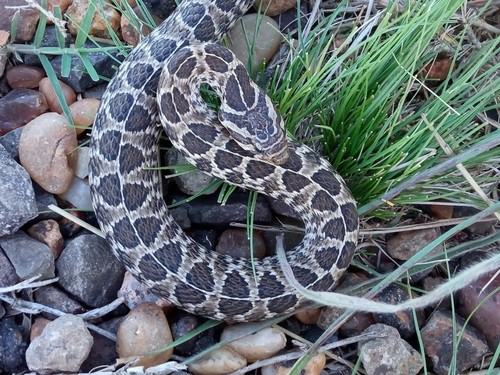
Part of the 3-member Tachymenis genus, also including the false tomodon snake of Argentina, which may be world’s 2nd most southerly snake. The ocellated pampas snake (Tachymenis ocellata) is instead centred around Uruguay, spilling into northeast Argentina as well. Very little is known about this species. It appears in more open areas, instead of claustrophobic Atlantic forests. The only diet observations are a meal of slugs dating back to 1972. They’re an egg-laying species rather than laying live young, and peak at 53cm.
The ocellated pampas snake is mainly separated from its Tachymenis cousins by a thin bright stripe down its spine, which is always present. They’re consistently grey-brown, with no bright red or green colours.
Ocellated pampas snakes aren’t rare in the slightest, as sightings are plentiful across Uruguay. Yet few people have bothered to research them. The biggest question is their venom potency. This species could be a sleeping menace, as the third Tachymenis member, the Peruvian ground snake, has supposedly caused one fatality.
| 7 | Dumeril’s diadem boa |
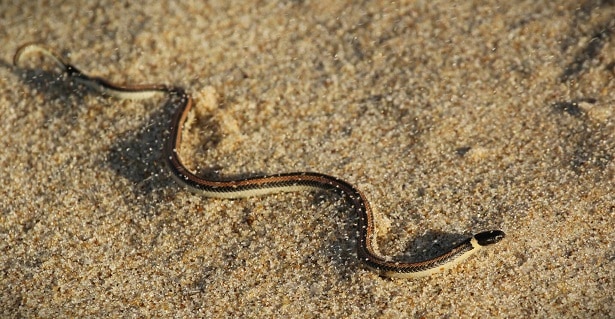
Uruguay and Argentina are a hotbed of obscure snakes that few in the West have heard of. Another is Dumeril’s diadem boa (Phalotris lemniscatus) part of the 15 member Phalotris family, all found in South America. This shy, burrowing species averages at 50cm, with an all-time record of 68cm, and isn’t actually a boa. A simple ID sign is a pale neck collar, followed by a very black head.
Dumeril’s diadem boa has flexible habitats, including Araucaria forests and pampas grasslands. They look shy and harmless like many burrowing snakes, yet Phalotris lemniscatus holds a deadly secret. Bites are uncommon, yet several have produced surprisingly nasty effects. In one case, a 13 year old boy experienced bleeding gums 12 hours after being bitten. A 61 year old woman experienced bloody urine, a headache and haemorrhaging.
Finally, a 1978 report detailed a bite from a male juvenile Phalotris lemniscatus. The patient experienced kidney failure, liver failure and worst of all, minor brain damage, almost dying. Parallel stripes running down the body are typical, but there’s variation, so always search for the white collar combined with black head. Their diet consists of elongated creatures, such as amphisbaneans, fellow snakes and earthworms. Phalotris lemniscatus is yet another snake to be preyed upon by the South American serpent community’s worst nightmare: the burrowing owl.
| 8 | Keeled sepia snake |
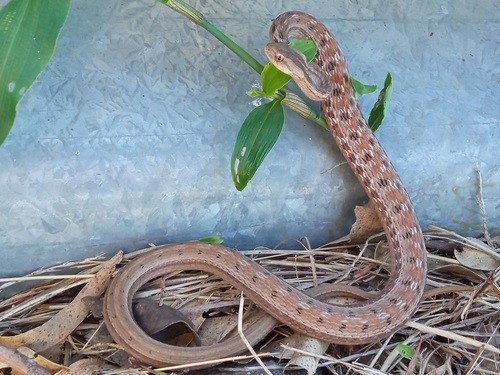
A nocturnal snake, which activates around twilight to begin its search for amphibians. Keeled sepia snakes (Dryophylax hypoconia) are found throughout Uruguay, extreme northeast Argentina, and southeast Brazil.
97% of their prey consists of frogs, and the remaining 3% lizards, according to a 2013 study. Consequently, this snake prefers damp and wet areas of Uruguay, rather than dusty plains. Keeled sepia snakes aren’t fully aquatic, but are concentrated along the courses of large rivers and their tributaries, and in marshland. A rounded snout is a classic ID sign of Dryophylax hypoconia. This is a small snake at a maximum of 80cm, and while they always appear brown from a distance, their patterns gain complexity up close.
Until 2022, keeled sepia snakes were placed in the Thamnodynastes family, and many old studies are still under that name. This is a snake with no notoriety, and no fearful legends repeated in hushed tones, yet a 2021 report detailed a 27 year old female who was bitten on the left wrist. She experienced swelling of the hand and forearm, which began at 20 minutes, and took 30 hours to begin to decrease.
| 9 | Uruguayan coral snake |
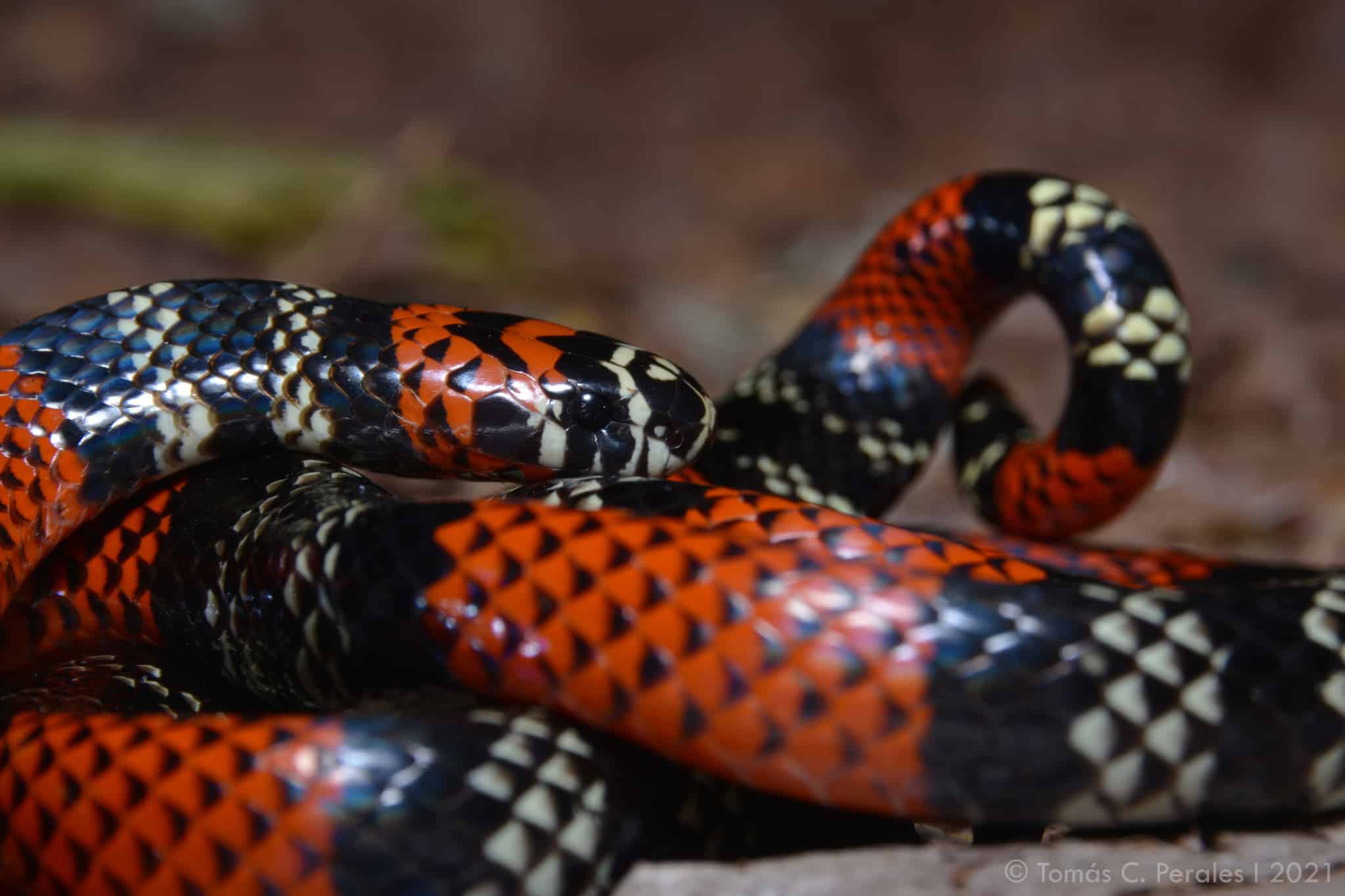
A coral snake measuring 80cm, with a decent territory, in which Uruguay lies squarely in the middle. This is Uruguay’s main coral snake, and while it causes far fewer bites than Pampas lanceheads or crossed pitvipers, it’s the single deadliest serpent in the country. It took until 2018 for a detailed bite report to be released, and the lethal power of Micrurus altirostris venom was plain to see.
The victim was a 25 year old man, bitten by a Uruguayan coral snake on the third finger of his left hand. First came abdominal pain and nausea, and after 5 hours, he was hit with a wave of dizziness, blurred vision and double vision, which are classic neurotoxic symptoms. Simultaneously, there was only mild swelling on his finger.
The man was moved to intensive care, where he rapidly progressed to full limb paralysis and respiratory paralysis. He was soon placed on mechanical ventilation with an intubator, so disabled was his breathing. The man endured, and on day 4, the ventilation was discontinued. He was discharged on day 7 with no lasting effects, but having brushed shoulders gently with death. Uruguayan coral snakes are most commonly found in Atlantic forests, plus roads and fields directly adjacent to forests.
| 10 | Wide ground snake |
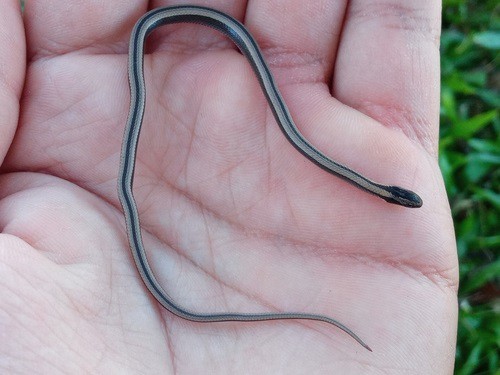
A member of the small Psomophis genus, which has 3 members. The wide ground snake is the most southerly, covering Uruguay and northeast Argentina. There’s also…
Psomophis joberti – lives further northeast, in eastern Brazil.
Spirit diminutive snake – found primarily in Bolivia, also Paraguay.
Barely anything is known about these 3 snakes. Wide ground snakes (Psomophis obtusus) appear mainly in wetter areas of Uruguay and reach a maximum of 50cm, with a thin body too. They also appear in sand dunes within coastal restinga forests, and they’re one of the few South American snakes known to practise communal nesting, a rare social activity for snakes (which are mainly solitary). Their main prey is believed to be amphibians.
Physically, wide ground snakes have round pupils rather than vertical, and a bright pink belly, contrasting against a duller grey back. This is strangely similar to the slender smooth snake of Madagascar, and it’s possible that they startle predators by flipping over and revealing the bright colours. Overall, research is scarce for this Uruguayan snake, despite being relatively common.
